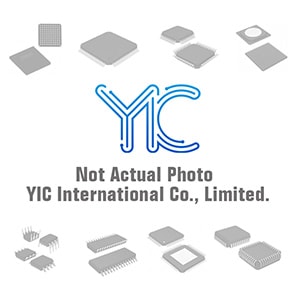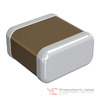Alle Kategorien
-
Integrierte schaltkreise (ICS)
Integrierte schaltkreise (ICS)
- Spezialisierte ICS(35707)
- PMIC-Spannungsregler-besonderer Zweck(1598)
- PMIC-Spannungsregler-lineare Regler(572)
- PMIC-Spannungsregler-linear + Switching(499)
- PMIC-Spannungsregler-linear(27467)
- PMIC-Spannungsregler-DC DC Switching Regulators(20868)
- PMIC-Regler-DC-DC-Switching-Controller(4728)
- PMIC-Spannungs-Referenz(2128)
- PMIC-v/f und f/v-Wandler(47)
- PMIC-Thermal Management(297)
- PMIC-Supervisor(17396)
- PMIC-RMS bis DC-Wandler(555)
- PMIC-Netzteil-Controller, Monitore(723)
- PMIC-Power over Ethernet (PoE) Controller(368)
- PMIC-Power Management-spezialisierte(2708)
- PMIC-Netzschalter, Treiber laden(1429)
- PMIC-PFC (Power Factor Correction)(320)
- PMIC oder Steuerungen, ideale Dioden(290)
- PMIC-Motor-Treiber, Regler(1166)
- PMIC-Beleuchtung, Ballast-Regler(1745)
- PMIC-LED-Treiber(11607)
- PMIC-Laser-Treiber(2349)
- PMIC-Hot-Swap-Controller(2468)
- PMIC-Gate-Treiber(5085)
- PMIC-voll, Half-Bridge-Treiber(364)
- PMIC-Energy Messung(2378)
- PMIC-Display-Treiber(4466)
- PMIC-derzeitige Regulierung/Management(732)
- PMIC-Batterie-Management(3519)
- PMIC-Ladegeräte(46080)
- PMIC-AC DC Konverter, Offline Schalter(21202)
- Memory-Controller(9982)
- Memory-Konfigurations-Proms für FPGAs(7695)
- Speicher-Akkus(130)
- Memory(19527)
- Memory(19527)
- Logic-universelle Bus-Funktionen(31014)
- Logic-Übersetzer, Level-Shifter(755)
- Logik-Specialty Logic(1916)
- Logik-Signal-Schalter, Multiplexer, Decoder(3447)
- Logic-Shift-Register(6058)
- Logic-Parity Generatoren und Checkers(6682)
- Logic-multivibratoren(1274)
- Logik-Latches(1535)
- Logik - Tore und Wechselrichter - Multifunktion, konfigurierbar(4223)
- Logik-Tore und Wechselrichter(5667)
- Logic-Flip Flops(7964)
- Logik-FIFOs Speicher(1236)
- Logik-Zähler, Trennlinien(3350)
- Logik-Vergleichsoperator(5892)
- Logik-Puffer, Treiber, Receiver, Transceiver(6630)
- Linear-Video-Verarbeitung(1075)
- Linear-Vergleichsoperator(2312)
- Linear-analoge Multiplikatoren, Trennwände(1237)
- Linear-Verstärker-Video Amps und Module(3822)
- Linear-Verstärker-Spezial-Zweck(3334)
- Linear - Verstärker - Instrumentierung, OP -Verstärker, Pufferverstärker(11463)
- Linear-Verstärker-Audio(971)
- Interface-Voice Record und Playback(634)
- Schnittstelle - UARTs (Universal Asynchronous Receivers -Sender)(133)
- Schnittstelle-Telecom(47636)
- Interface-spezialisierte(1301)
- Interface-Signal Terminatoren(2351)
- Interface-Signal-Puffer, Repeater, Splitter(1834)
- Interface-Serializer, Deserializer(7226)
- Schnittstellen-Sensor und Detektor-Interfaces(2321)
- Interface-Module(230)
- Interface-Modems-ICS und Module(668)
- Interface-e/a-Expander(2822)
- Interface-Filter-aktiv(1524)
- Interface-Encoder, Decoder, Konverter(11802)
- Interface-Treiber, Receiver, Transceiver(10390)
- Interface-Direct Digital Synthesis (DDS)(3471)
- Interface-Controller(3245)
- Interface-Codecs(583)
- Schnittstelle - Analoge Switches, Multiplexer, Demultiplexer(15690)
- Schnittstelle-analoge Schalter-spezieller Zweck(2961)
- Embedded-System on Chip (SoC)(6429)
- Embedded-PLDs (programmierbare Logik-Vorrichtung)(613)
- Embedded-Mikroprozessoren(5164)
- Embedded-Mikrocontroller-anwendungsspezifische(2091)
- Embedded-Mikrocontroller(59305)
- Eingebettet - Mikrocontroller, Mikroprozessor, FPGA -Module(4518)
- Eingebettet - FPGAs (Feldprogrammiergate -Array) mit Mikrocontrollern(557)
- Embedded-FPGAs (Field Programmable Gate Array)(7189)
- Embedded-DSP (Digital Signal Processors)(4650)
- Eingebettet - CPLDs (komplexe programmierbare Logikgeräte)(4971)
- Datenerfassung-Touch Screen Controller(596)
- Datenerfassung-Digital to Analog Converter (DAC)(5044)
- Datenerfassung-digitale Potentiometer(1879)
- Datenerfassung-analog zu Digital Converters (ADC)(5134)
- Datenerfassung-analoges Frontend (AFE)(227)
- Datenerfassung-MDE/DACs-spezieller Zweck(922)
- Clock/Timing-Uhren in Echtzeit(1372)
- Uhr/Timing - programmierbare Timer und Oszillatoren(1504)
- Clock/Timing-IC-Akkus(492)
- Takt/Timing-Delay Lines(16538)
- Uhr/Timing - Uhrengeneratoren, PLLS, Frequenzsynthesizer(20093)
- Clock/Timing-Clock Puffer, Treiber(3531)
- Clock/Timing-anwendungsspezifische(3433)
- Audio Spezial-Zweck(9718)
-
Diskrete Halbleiter-Produkte
Diskrete Halbleiter-Produkte
- Aktuelle Regulierung - Dioden, Transistoren(775)
- Transistoren-besonderer Zweck(64)
- Transistoren-programmierbare Unijunction(1584)
- Transistoren-jfets(1690)
- Transistoren-IGBTs-Einzel(6032)
- Transistoren-IGBTs-Module(1087)
- Transistoren-IGBTs-Arrays(9)
- Transistoren-FETs, MOSFETs-Einzel(16037)
- Transistoren-FETs, MOSFETs-RF(3251)
- Transistoren-FETs, MOSFETs-Arrays(6376)
- Transistoren-Bipolar (BJT)-einzeln, Pre-biased(4478)
- Transistoren-Bipolar (BJT)-Einzel(12624)
- Transistoren-Bipolar (BJT)-RF(488)
- Transistoren-bipolare (BJT)-Arrays, Pre-biased(6311)
- Transistoren-bipolare (BJT)-Arrays(1394)
- Thyristor-triacs(1128)
- Thyristoren-SCRs-Module(1141)
- Thyristoren-SCRs(2752)
- Thyristoren-diacs, sidacs(164)
- Power Driver Module(4744)
- Dioden-zenerdioden-Einzel(43480)
- Dioden-zenerdioden-Arrays(113195)
- Dioden - variable Kapazität (Varik, Varaktoren)(718)
- Dioden-RF(1765)
- Dioden-Gleichrichter-Einzel(31894)
- Dioden-Gleichrichter-Arrays(8627)
- Dioden-Brücke-Gleichrichter(20238)
-
RF/if und RFID
RF/if und RFID
- SIM -Karten für Abonnenten -Identifikationsmodul (SIM)(41)
- RF -Zirkulatoren und Isolatoren(1721)
- RFID, RF-Zugang, Monitoring-ICS(4567)
- RFID Transponder, Tags(240)
- RFID Lesegeräte(1877)
- RFID Evaluation und Development Kits, Boards(67)
- RFID Evaluation und Development Kits, Boards(67)
- RFID Antennen(696)
- RFI und EMI - Abschirm- und Absorbungsmaterialien(8538)
- HF und EMI-Kontakte, Fingerstock und Dichtungen(4004)
- RF Transmitter(1179)
- RF Transceiver Module(4056)
- RF-Transceiver ICS(1553)
- HF-Schalter(8107)
- RF Shields(4991)
- HF-Receiver(639)
- HF -Empfänger, Sender und Transceiver -Einheiten(3515)
- RF Power Divider/Splitter(4268)
- RF Power Controller ICs(595)
- HF-Modulatoren(3958)
- HF-Mixer(4622)
- RF misc ICS und Module(2738)
- HF-Front-End (LNA + PA)(11681)
- HF Evaluation und Development Kits, Boards(1994)
- HF Evaluation und Development Kits, Boards(1994)
- HF-gerichtete Kupplung(2963)
- RF Diplexer(1406)
- RF-Detektoren(175)
- RF-Demodulatoren(256)
- HF-Antennen(7488)
- HF-Verstärker(17487)
- Balun(706)
- Dämpfungsglieder(3204)
-
Optoelektronik
Optoelektronik
- Optomechanisch(338)
- Leuchten(125)
- Laserdioden, Lasermodule - Laserlieferung, Laserfasern(325)
- Hene Lasersysteme(24)
- Hene Laserköpfe(16)
- Hintergrundbeleuchtung anzeigen(31)
- Xenon-Beleuchtung(549)
- Touchscreen-Overlays(249048)
- Panel Indicators, Pilot Lights(47475)
- Optik-Remote-Phosphor-Lichtquelle(2771)
- Optik-Reflektoren(145)
- Optik-leichte Rohre(3353)
- Optik-Objektive(15458)
- LEDs-Spacer, Unentschieden(433)
- LEDs-Lamp-Ersetzungen(24316)
- LEDs - Leiterplattenindikatoren, Arrays, Lichtstäbe, Balkendiagramme(1922)
- LED-thermische Produkte(6703)
- LED-Beleuchtung(39)
- LED-Beleuchtung-weiß(13461)
- LED-Beleuchtung-Farbe(2210)
- LED-Beleuchtung-Maiskolben, Motoren, Module(9508)
- LED-Anzeige-diskret(10227)
- Laserdioden, Module(1345)
- Lampen-Glühlampen, Neons(338506)
- Lampen-Kälte-Fluoreszenz (KKL) & UV(349)
- Wechselrichter(7962)
- Infrarot, UV, sichtbare Strahler(3759)
- Fiber Optics-Transmitter-Antrieb integriert(3523)
- Fiber Optics-Transmitter-diskrete(2743)
- Fiber Optics-Transceiver Module(22925)
- Fiberoptik-Switches, Multiplexer, Demultiplexer(8234)
- Fiberoptik-Receiver(853)
- Fiberoptik-Dämpfung(394)
- Elektrolumineszenz(24758)
- Display, Monitor-Interface Controller(2642)
- Display-Module-Vakuum-Leuchtstofflampen (VFD)(19327)
- Module anzeigen-LED Dot Matrix und Cluster(17654)
- Display-Module-LED-Zeichen und numerische(2162)
- Display-Module-LCD, OLED, Graphic(3487)
- Display-Module-LCD, OLED-Zeichen und numerische(790)
- Display-Blenden, Objektive(288)
- Adresse, Spezialität(2442)
-
Sensoren, Wandler
Sensoren, Wandler
- Ultraschallempfänger, Sender - Industrial(115)
- Temperatursensoren - Thermostate - Mechanisch - Industrielles(1270)
- Temperatursensoren - Analog und digitaler Ausgang - Industrial(169)
- Näherungssensoren - Industrial(7143)
- Drucksensoren, Wandler - Industrie(1835)
- Optische Sensoren - Photonik - Zähler, Detektoren, SPCM (Einzelphotonzählmodul)(726)
- Optische Sensoren - Kameramodule(776)
- Magnetsensoren - Position, Nähe, Geschwindigkeit (Module) - Industrie(138)
- Kraftsensoren - Industrial(265)
- Flusssensoren - Industrielles(137)
- Float, Level Sensoren - Industrial(172)
- Encoder - Industrial(2217)
- Farbsensoren - Industrial(20)
- Berührungssensoren(63)
- Ultraschall-Receiver, Transmitter(986)
- Temperatursensoren-Thermostat-Solid State(333)
- Temperatursensoren-Thermostate-mechanisch(4379)
- Temperatursensoren - Thermoelemente, Temperatursonden(1770)
- Temperatursensoren - RTD (Widerstandstemperaturdetektor)(1653)
- Temperatursensoren-PTC-Thermistoren(2026)
- Temperatursensoren-ntc-thermistoren(7932)
- Temperatursensoren-Analog und Digital Output(2963)
- DMS(1886)
- Spezialisierte Sensoren(3142)
- Solarzellen(688)
- Schock-Sensoren(317)
- Sensor-Interface-Junction-Blöcke(2156)
- Sensor-Kabel-Baugruppen(26522)
- Proximity/Belegung Sensoren-fertige Einheiten(902)
- Näherungsschalter(3322)
- Drucksensoren, Wandler(10275)
- Positionssensoren - Winkel, lineare Positionsmessung(3882)
- Optische Sensoren-reflektierende-Logik-Ausgang(1471)
- Optische Sensoren - reflektierend - analoge Ausgang(1258)
- Optische Sensoren-Phototransistoren(1032)
- Optische Sensoren - Photointerrupter - Schlitztyp - Transistorausgang(513)
- Optische Sensoren - Photointerrupter - Schlitztyp - Logikausgabe(559)
- Optische Sensoren-Lichtschranke, Industrial(12132)
- Optische Sensoren-Photodioden(3168)
- Optische Sensoren-Foto-Detektoren-Remote Receiver(1350)
- Optische Sensoren-Foto-Detektoren-Logik-Ausgang(339)
- Optische Sensoren-Foto-Detektoren-CDs-Zellen(717)
- Optische Sensoren-Maus(1297)
- Optische Sensoren-Distanz-Messung(1412)
- Optische Sensoren-Ambient Light, IR, UV Sensoren(10243)
- Multifunktions(1418)
- Motion Sensors-Vibration(1680)
- Motion Sensors-Tilt Schalter(159)
- Bewegungsmelder-optisch(347)
- Motion Sensors-Neigungssensoren(102)
- Motion Sensors-Imus (Trägheit-Maßeinheiten)(298)
- Motion Sensors-Kreisel(702)
- Motion Sensors-Beschleunigungsmesser(764)
- Magnete-Sensor abgestimmt(152)
- Magnete-Multi Purpose(1871)
- Magnetische Sensoren-Schalter (Solid State)(1519)
- Magnetsensoren - Position, Nähe, Geschwindigkeit (Module)(2148)
- Magnetische Sensoren-linear, Kompass (ICS)(698)
- Magnetsensoren - Kompass, Magnetfeld (Module)(178)
- LVDT -Wandler (linearer variabler Differentialtransformator)(1451)
- IrDA Transceiver-Module(77)
- Bildsensor, Kamera(1272)
- Feuchtigkeit-Sensoren(3880)
- Gas-Sensoren(4294)
- Force Sensoren(1023)
- Durchfluss-Sensoren(440)
- Float, Level Sensoren(634)
- Flex-Sensoren(157)
- Encoder(3440)
- Staub-Sensoren(388)
- Aktuelle Wandler(2256)
- Color Sensoren(49)
- Schnittstelle - Sensor, kapazitive Berührung(356)
- Verstärker(2000)
- Verstärker(2000)
-
Anschlüsse, Verbindungen
Anschlüsse, Verbindungen
- Stecker und Behälter(1710)
- USB, DVI, HDMI Stecker-Adapter(45761)
- USB, DVI, HDMI Stecker(3377)
- USB, DVI, HDMI Stecker(3377)
- Klemmen-Wire to Board Steckverbinder(1604)
- Klemmen-Draht-Steckverbinder(40747)
- Klemmen-Draht-Pin Stecker(12531)
- Terminals-Revolver Steckverbinder(5553)
- Terminals-spezialisierte Steckverbinder(1300)
- Klemmen-Spaten Verbinder(1381)
- Klemmen-Löten/Stecker(2577)
- Klemmen-Verschraubungen(1980)
- Klemmen-Ring Steckverbinder(6682)
- Klemmen-rechteckige Steckverbinder(3878)
- Terminals - Schnellverbindungen, schnelle Trennungsanschlüsse(4695)
- Klemmen-PC PIN, Single Post Connectors(2149)
- Klemmen-PC-Pin-Buchsen, Sockel-Steckverbinder(2222)
- Klemmen-magnetische Draht-Steckverbinder(3357)
- Klemmen-Messer Steckverbinder(3829)
- Klemmen-Gehäuse, Stiefel(1891)
- Klemmen-Folie Steckverbinder(662)
- Klemmen-Barrel, Bullet-Steckverbinder(5430)
- Klemmen-Adapter(713)
- Terminal-Streifen und Revolver-Boards(11368)
- Terminal Junction Systeme(3288)
- Anschlussblöcke-Draht an Bord(19352)
- Terminal Blocks-spezialisierte(2960)
- Terminal Blocks-Power Distribution(499)
- Anschlussblöcke-Panel Mount(522)
- Terminal Blocks-Interface Module(1639)
- Anschlussblöcke-Kopfzeilen, Stecker und Buchsen(148192)
- Anschlussblöcke-DIN-Schiene, Kanal(10920)
- Anschlussblöcke-Kontakte(306247)
- Anschlussblöcke-Barrier Blocks(44736)
- Anschlussblöcke-Adapter(449)
- Solid State Lighting Verbinder-Kontakte(2509)
- Solid State Lighting Steckverbinder(2295)
- Solid State Lighting Steckverbinder(2295)
- Buchsen für ICS, Transistoren-Adapter(765)
- Buchsen für ICS, Transistoren(2223)
- Buchsen für ICS, Transistoren(2223)
- Shunts, Jumper(821)
- Rechteckige Verbinder-Feder geladen(8043)
- Rechteckige Steckverbinder-Gehäuse(28877)
- Rechteckige Verbinder-Kopfzeilen, Spezial-PIN(5397)
- Rechteckige Anschlüsse - Header, Gefäße, weibliche Sockel(23450)
- Rechteckige Verbinder-Kopfzeilen, männliche Pins(138439)
- Rechteckige Anschlüsse - kostenloses Hängen, Panelhalterung(15074)
- Rechteckige Verbinder-Kontakte(5477)
- Rechteckige Anschlüsse - Board in, Direktdraht zum Board(2459)
- Rechteckige Verbinder-Adapter(251)
- Rechteckig - Brett zu Board -Steckern - Header, Behälter, weibliche Sockel(2982)
- Rechteckig - Brett zu Board -Steckern - Header, männliche Stifte(239)
- Rechteckige Anschlüsse - Board -Abstandshalter, Stacker (Board zu Board)(27782)
- Rechteckige Anschlüsse - Arrays, Kantentyp, Mezzanin (Board zu Board)(14186)
- Stromanschluss-Eingänge, Steckdosen, Module(4831)
- Austauschbare Steckverbinder(5229)
- Austauschbare Steckverbinder(5229)
- Photovoltaik- (Solarpanel) Anschlüsse - Kontakte(69363)
- Photovoltaik (Solar Panel) Steckverbinder(365)
- Photovoltaik (Solar Panel) Steckverbinder(365)
- Modulare Steckverbinder-Verdrahtung Blöcke(653)
- Modulare Steckverbinder-Stecker(2164)
- Modulare Steckverbinder-Stecker Gehäuse(3582)
- Modulare Steckverbinder-Buchsen mit magnetischen(4193)
- Modulare Steckverbinder-Buchsen(15464)
- Modulare Steckverbinder-Adapter(503)
- Memory Connectors-PC Cards-Adapter(859)
- Memory Connectors-PC Card Sockets(1904)
- Memory Connectors-Inline Modul Sockets(2493)
- LGH Steckverbinder(1057)
- Keystone-Einsätze(8467)
- Keystone-Frontplatte, Frames(19410)
- Heavy Duty Steckverbinder-Einsätze, Module(213354)
- Schwerlastanschlüsse - Gehäuse, Kapuzen, Basen(449460)
- Heavy Duty Steckverbinder-Frames(16851)
- Heavy Duty Steckverbinder-Kontakte(6325)
- Heavy Duty Steckverbinder-Baugruppen(1730)
- LWL-Steckverbinder-Gehäuse(4852)
- Glasfaser-Steckverbinder - Adapter(2754)
- LWL-Steckverbinder(215502)
- FFC, FPC (flache flexible) Steckverbinder - Gehäuse(30189)
- FFC, FPC (flache flexible) Anschlüsse - Kontakte(114)
- FFC, FPC (flache flexible) Steckverbinder(12920)
- FFC, FPC (flache flexible) Steckverbinder(12920)
- D-Sub, d-förmige Steckverbinder-Terminatoren(640)
- D-Sub, d-förmige Steckverbinder-Gehäuse(12383)
- D-Sub, d-förmige Steckverbinder-Kontakte(1350)
- D-Sub, D-förmige Steckverbinder-Rückenschalen, Kapuzen(3078)
- D-Sub, d-förmige Steckverbinder-Adapter(976)
- D-Sub Steckverbinder(106471)
- D-förmige Steckverbinder-Centronics(6037)
- Kontakte, Frühling geladen und Druck(7921)
- Kontakte-Multi Purpose(16222)
- Kontakte-"Leadframe"(572)
- Koaxial-Steckverbinder (RF)-Terminatoren(1374)
- Koaxial-Steckverbinder (RF)-Kontakte(279)
- Koaxial-Steckverbinder (RF)-Adapter(5909)
- Koaxial-Steckverbinder (RF)(16068)
- Koaxial-Steckverbinder (RF)(16068)
- Rundsteckverbinder-Gehäuse(221760)
- Rundsteckverbinder-Kontakte(3377)
- Rundsteckverbinder-backschalen und Kabel-Klemmen(44820)
- Rundsteckverbinder-Adapter(7708)
- Rundsteckverbinder(771637)
- Rundsteckverbinder(771637)
- Card Edge Steckverbinder-Gehäuse(577)
- Karte Edge Verbinder-edgeboard Verbinder(497865)
- Card Edge Verbinder-Kontakte(527)
- Card Edge Verbinder-Adapter(2752)
- Blade Type Power Steckverbinder-Gehäuse(2290)
- Blade Type Power Connectors-Kontakte(715)
- Blade-Typ-Stecker(2373)
- Blade-Typ-Stecker(2373)
- Zwischen Serien-Adapter(289)
- Barrel-Stromanschluss(399)
- Barrel-Audio-Anschlüsse(10808)
- Barrel-Audio Adapter(54)
- Banana und Tip Steckverbinder-Buchsen, Stecker(2046)
- Banana and Tip Connectors-Binding Posts(3219)
- Banana und Tip Steckverbinder-Adapter(647)
- Backplane Steckverbinder-spezialisiert(33926)
- Backplane Steckverbinder-Gehäuse(47465)
- Backplane Steckverbinder-Hard metrisch, Standard(7596)
- Backplane Steckverbinder-DIN 41612(4684)
- Backplane Steckverbinder-Kontakte(4419)
- Backplane Connectors-ARINC Einsätze(2322)
- Backplane Steckverbinder-ARINC(3305)
-
Widerstände
-
Kondensatoren
Kondensatoren
- Trimmer, Variable Kondensatoren(1088)
- Dünne Folien-Kondensatoren(1724)
- Tantal-Kondensatoren(79518)
- Tantal-Polymer-Kondensatoren(2486)
- Silizium-Kondensatoren(225)
- Niob Oxide Kondensatoren(128)
- Mica und PTFE Kondensatoren(908)
- Folien-Kondensatoren(89898)
- Elektrische Doppelschichtkondensatoren (EDLC), Superkondensatoren(1644)
- Keramische Kondensatoren(261123)
- Kondensatoren-Netzwerke, Arrays(740)
- Aluminium-Elektrolytkondensatoren(39501)
- Aluminium-Polymer-Kondensatoren(2396)
-
Transformatoren
-
Isolatoren
-
Kristalle, Oszillatoren, Resonatoren
-
Switches
Switches
- Verriegelungsschalter(862)
- Emergency-Stop-Schalter (E-Stop)(752)
- Kabelzugschalter(353)
- Toggle-Schalter(18713)
- Rändelrads Schalter(1050)
- Schalter(9157)
- Snap-Aktion, Endschalter begrenzen(14916)
- Slide-Schalter(24680)
- Selector-Schalter(4460)
- Rotary Switches(5818)
- Rocker Schalter(60676)
- Drucktaste-Schalter-Hall-Effekt(3768)
- Drucktaste Schalter(29541)
- Programmierbare Display-Switches(13202)
- Navigations-Schalter, Joystick(14105)
- Magnetische, Reed-Schalter(604)
- Keypad-Schalter(168067)
- Keylock Schalter(1623)
- DIP Schalter(2977)
- Konfigurierbare Switch-Komponenten-Objektiv(1755)
- Konfigurierbare Schalter-Komponenten-Lichtquelle(1239)
- Konfigurierbare Switch-Komponenten-Contact Block(2781)
- Konfigurierbare Switch-Komponenten-Body(17732)
-
Relais
Relais
- Sicherheitsrelais(722)
- Reedrelais(484)
- Hochfrequenz (RF) -Relais(461)
- Schütze (Festkörper)(64)
- Schütze (elektromechanisch)(10945)
- Kfz-Relais(1280)
- Solid State Relais(3585)
- Signal-Relais, bis zu 2 Ampere(6811)
- Relay-Sockets(869)
- Power Relays, über 2 Ampere(369115)
- E / A-Relaismodule(593)
- I/o-Relay-Module-Input(30134)
- I/o-Relay-Module-Analog(438223)
- I/o-Relay-Modul-Racks(14318)
Sprache auswählen
Aktuelle Sprache
Deutsch
- English
- Deutsch
- Italia
- Français
- 日本語
- 한국의
- русский
- Svenska
- Nederland
- español
- Português
- polski
- Suomi
- Gaeilge
- Slovenská
- Slovenija
- Čeština
- Melayu
- Magyarország
- Hrvatska
- Dansk
- românesc
- Indonesia
- Ελλάδα
- Български език
- Afrikaans
- IsiXhosa
- isiZulu
- lietuvių
- Maori
- Kongeriket
- Монголулс
- O'zbek
- Tiếng Việt
- हिंदी
- اردو
- Kurdî
- Català
- Bosna
- Euskera
- العربية
- فارسی
- Corsa
- Chicheŵa
- עִבְרִית
- Latviešu
- Hausa
- Беларусь
- አማርኛ
- Republika e Shqipërisë
- Eesti Vabariik
- íslenska
- မြန်မာ
- Македонски
- Lëtzebuergesch
- საქართველო
- Cambodia
- Pilipino
- Azərbaycan
- ພາສາລາວ
- বাংলা ভাষার
- پښتو
- malaɡasʲ
- Кыргыз тили
- Ayiti
- Қазақша
- Samoa
- සිංහල
- ภาษาไทย
- Україна
- Kiswahili
- Cрпски
- Galego
- नेपाली
- Sesotho
- Тоҷикӣ
- Türk dili
- ગુજરાતી
- ಕನ್ನಡkannaḍa
- मराठी
Verbinden Sie einen tragbaren Solargenerator an Ihr elektrisches Panel
Zeit: 2024/10/28
Durchsuchen: 608
Katalog

Verständnis des elektrischen Panels
Ein elektrisches Panel, oft als als als bezeichnet Breaker -Panel, die wichtige Komponente des elektrischen Systems Ihres Hauses.In der Regel an einer Wand in einem niedrigen Verkehrsbereich montiert, beherbergt dieser Metallbox die Breaker-Schalter, die die Stromversorgung für verschiedene Schaltkreise in Ihrem Haus steuern.Jeder Schalter ist so ausgelegt, dass er im Falle einer Überlastung automatisch ausgeschaltet wird und Ihr Zuhause vor potenziellen elektrischen Gefahren schützt.Der Hauptschalter innerhalb des Panels reguliert die Stromverteilung im gesamten Haus.Angesichts seiner zentralen Rolle erwägen viele Hausbesitzer, einen Solargenerator in sein Elektropanel für zusätzliche Stromversorgung bei Ausfällen zu integrieren.
Können Sie einen Solargenerator an Ihr elektrisches Feld anschließen?
Das Anschließen eines tragbaren Solargenerators an Ihr elektrisches Panel ist möglich, erfordert aber sorgfältige Aufmerksamkeit Detail zur Gewährleistung von Sicherheit und Wirksamkeit.Unsachgemäße Verbindungen können sowohl den Generator als auch das Panel beschädigen.Um diese Verbindung zu erleichtern, benötigen Sie bestimmte Werkzeuge und Geräte wie geeignete Netzkabel und Übertragungsschalter.Glücklicherweise sind die meisten Solargeneratoren mit eingebauten Ladungscontrollern und Stromwechselrunden ausgestattet, was bedeutet, dass Sie diese Komponenten nicht separat kaufen müssen.
Wenn Sie bereits über ein gittergebundenes Sonnensystem verfügen, wird das Verbinden Ihres Solargenerators einfacher.Sie können es über den vorhandenen Power -Wechselrichter integrieren.Wenn Ihr Sonnensystem jedoch unabhängig voneinander arbeitet, kann der Verbindungsprozess komplexer sein.
Verbinden Sie Ihren Solargenerator mit Ihrem Zuhause
Wenn Sie Ihren Solargenerator an Ihr Zuhause anschließen, ist die Verwendung eines Generatorübertragungsschalters die sicherste und unkomplizierteste Methode.Diese Geräte sind am elektrischen Feld installiert und dienen als Vermittler zwischen Ihrem Solargenerator und dem elektrischen System, um ein sicheres und effizientes Stromverwaltung zu gewährleisten.Übertragungsschalter verbinden sich an alle Schaltkreise in Ihrem elektrischen Feld, sodass Sie selektiv Strom für bestimmte Bereiche Ihres Hauses liefern können.Ausgestattet mit Sicherheitsmerkmalen verhindern sie, dass die Stromversorgungsrück- und Stromversorgungsrückmeldungen nur dort fließen, wo Sie beabsichtigen.Diese Flexibilität ist besonders in Notfällen nützlich.Zum Beispiel können Sie im Falle eines Netzversagens die erforderlichen Schaltungen wie diejenigen anstrengen, die Lichter und Ihren Kühlschrank anstrengen, und gleichzeitig nicht wesentliche Geräte wie Klimaanlagen vermeiden.
Bei der Betrachtung der Verbindung eines tragbaren Solargenerators zu einem Standard -Elektropanel stehen drei Haupttypen von Übertragungsschalter zur Auswahl:
Automatischer Übertragungsschalter: Diese intelligenten Geräte erkennen automatisch einen Stromausfall und einen Schalter, um Strom vom angeschlossenen Solargenerator zu zeichnen.Sie kehren nahtlos in die Stromversorgung zurück, wenn das Netz wiederhergestellt wird.Während sie Komfort und Effizienz bieten, haben sie einen höheren Preis, was sie ideal für diejenigen macht, die häufig Stromunterbrechungen haben und möglicherweise von mehreren Solargeneratoren profitieren.
Manuelles Übertragungs-Subpanelschalter : Eine budgetfreundlichere Option, diese Art des Schalters erfordert eine manuelle Aktivierung während eines Ausfalls.Es ist für Hausbesitzer geeignet, die bei gelegentlichen Ausfällen nur wichtige Geräte mit Strom versorgen müssen.
Breaker -Interlock -Anschluss: Breaker -Interlock -Anschlüsse für ihre Erschwinglichkeit und Flexibilität beliebt und ermöglichen es Ihnen, auszuwählen, welche Geräte Ihre Solargenerator -Befugnisse haben.Viele umfassen ein integriertes Verstärkermesser, um Überladung zu verhindern, was sie zu einer zuverlässigen Wahl für verschiedene Strombedürfnisse macht.
Fahren Sie Ihr Zuhause ohne elektrische Panel an
Viele Hausbesitzer verbinden ihre elektronischen Geräte und Geräte direkt an Solargeneratoren, wobei das elektrische Panel umgangen wird.Einer der Vorteile von Solargeneratoren ist der vielfältige Bereich der Leistungsausgangsanschlüsse, die die Kompatibilität mit den meisten Geräten sicherstellen.In der Regel sind Solargeneratoren mit verschiedenen Ladeoptionen ausgestattet, darunter mehrere USB-Anschlüsse, Wechselstromgeschäfte, 12-V-Filialen und sogar die neuesten USB-C-Anschlüsse.Mit dieser Vielseitigkeit können Sie eine Vielzahl von Geräten ohne Kompatibilitätsprobleme mit Strom versorgen.
Wenn Sie überlegen, welchen Solargenerator Sie auswählen sollen oder wie viele Einheiten zu kaufen sind, beginnen Sie mit einer grundlegenden Lastwattage -Berechnung, um Ihre elektrischen Anforderungen während eines Stromausfalls zu ermitteln.Diese Berechnung führt Sie bei der Auswahl eines geeigneten Solargenerators und den erforderlichen Sonnenkollektoren, um ihn angemessen aufgeladen zu halten.Wenn ein einzelner Solargenerator Ihre Stromanforderungen nicht entspricht, können Sie mehrere Einheiten parallel ausführen, um Ihre Energiekapazität zu erhöhen.
Auswählen des richtigen Solargenerators für Ihre Anforderungen
Solargeneratoren sind vielseitige und sehr nützliche Werkzeuge, um Solarenergie zu nutzen.Sie sind tragbar und sind mit allen notwendigen Komponenten ausgestattet, um Ihre elektronischen Geräte effizient Solarenergie zu liefern.
Bewertung Ihrer Strombedürfnisse
Für diejenigen, die keinen Solargenerator in voller Größe benötigen und nur genügend Strom für Notleuchten und kleine elektronische Geräte benötigen.Diese kompakten Einheiten sind ideal für Situationen, die eine begrenzte Versorgung mit tragbarem Strom erfordern, aber möglicherweise nicht über die Kapazität für größere Geräte verfügen.Trotz der Option, einen Übertragungsschalter zu verwenden, um eine Verbindung zum Elektropanel Ihres Hauses herzustellen, ermöglichen die unterschiedlichen Ausgangsports des EB150 eine Vielzahl von Geräten, einschließlich:
• 2 Standard-AC-Steckdosen (Wall-Stil)
• 4 USB -Anschlüsse
• 1 USB-C-Anschluss
• 1 12 V Outlet
Das integrierte LED-Display und das leichte Design verbessern seine Benutzerfreundlichkeit und machen es für Sie ausreichender.
Vollständige Solarstromsysteme
Wenn Sie feststellen, dass ein Solargenerator nicht genügend Strom für Ihre Anforderungen bietet, sollten Sie in ein vollwertiges Solarstromsystem investieren.Diese Systeme verdrehen direkt zu Ihrem Zuhause, beseitigen Speicherbeschränkungen und bieten eine dauerhaftere Lösung für den Energiebedarf.Während sie eine gewisse Portabilität opfern, bieten sie zahlreiche Vorteile für diejenigen, die eine robuste Solarenergieinfrastruktur suchen.
In unserem Solargeschäft finden Sie eine vollständige Reihe von Solaranlagen, unabhängig davon, ob Sie nach einem kompletten Solar -Kit oder bestimmten Komponenten suchen.Wir tragen Top -Marken und bieten wettbewerbsfähige Preise in unserem Inventar an.
Umrichter von Solarenergie verstehen
Ein Solarenergie -Wechselrichter ist eine entscheidende Komponente in jedem Solarenergiesystem.Sonnenkollektoren erzeugen eine Gleichstromleistung (DC) aus Sonnenlicht, aber die meisten elektrischen Geräte und Geräte arbeiten mit Wechselstrom (Wechselstrom).Daher ist ein Leistungswechselrichter erforderlich, um die Gleichstromleistung aus den Sonnenkollektoren in nutzbare Wechselstromleistung umzuwandeln, sodass Sie die von Ihrem Sonnensystem erzeugte Energie effektiv nutzen können.
Abschluss
Ein Solargenerator kann ein unschätzbares Kapital sein, unabhängig davon, ob Sie ihn direkt an das elektrische Panel Ihres Hauses anschließen oder als tragbares Kraftwerk verwenden möchten.Wir bieten eine Vielzahl von Solargeneratoren und Generator -Kits an, die Ihren spezifischen Anforderungen entsprechen.Tragbare Solargeneratoren bieten eine unglaubliche Vielseitigkeit und Nützlichkeit, unabhängig davon, ob Sie sie direkt an das elektrische Panel Ihres Hauses anschließen oder als eigenständige Stromquellen verwenden.
Verwandter Artikel
-
Oct 29 2024Leitfaden für digitale Signalprozessoren
Digitale Signalprozessoren (DSPs) sind ein wesentlicher Bestandteil der modernen Technologie und ermöglichen die effiziente Verarbeitung digitaler Si... -
Oct 28 2024TPMS -Sensoren Bedeutung und Funktionalität
Das Reifendrucküberwachungssystem (TPMS) ist ein Sicherheitsmerkmal in modernen Fahrzeugen, mit dem die Fahrer den richtigen Reifendruck aufrechterha...
Verwandte -Produkte

CGA5F2X8R2A473M085AD
CAP CER 0.047UF 100V 1206 EPOXY

1808AC100KAT9A
CAP CER 10PF 1KV X7R 1808

7MBP160RTA060-01
IGBT Modules

ERJM1WSF20MU
Panason SMD
SD731A-3AC4
TOSHIBA QFP

ISL54205IRUZ-T
ISL54205IRUZ-T INTERSI

DFLS230-7-F
DFLS230-7-F DIODES

MT8377AHA
MEDIATEK BGA

PEF24625EV1.2-G
PEF24625EV1.2-G INFINEON

FDW2601NZ_NL
FDW2601NZ_NL FAIRCHILD

SY10S897JCSYNERGY
SYNERGY PLCC44

USB4916-I/9JXVBA
MICROCHIP VQFN64










































































